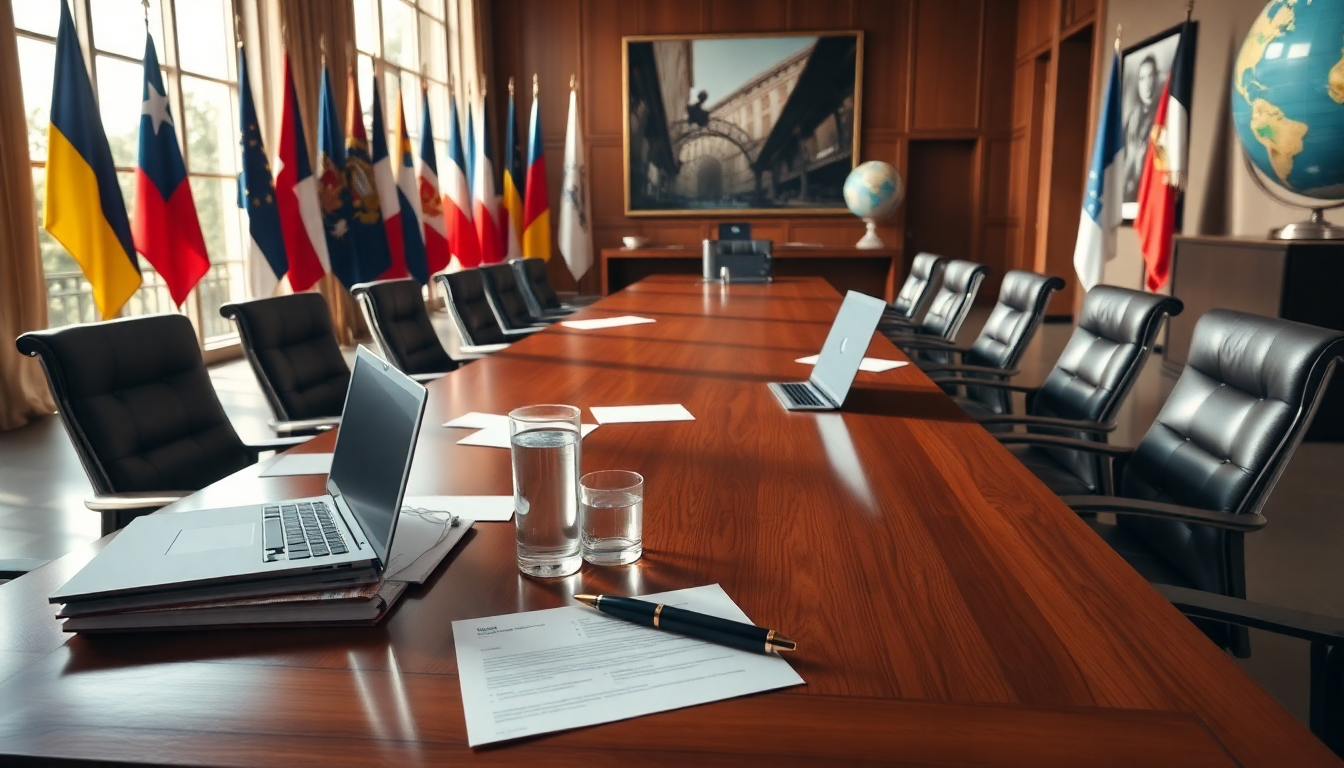Table of Contents
The ongoing conflict in Ukraine is more than just a news headline; it’s a complex saga unfolding on the global stage, with leaders from various nations desperately seeking a resolution. Recent conversations involving U.S. President Donald Trump, Ukrainian President Volodymyr Zelenskyy, and Russian President Vladimir Putin highlight the intricate negotiations at play.
Each leader is maneuvering with their national interests in mind, making the journey toward peace a daunting and challenging task. Have you ever wondered how these high-stakes discussions can impact everyday lives in Ukraine?
The Current Diplomatic Landscape
As the war rages on, the stakes couldn’t be higher.
President Trump recently stated, “There’s no deal until there’s a deal,” capturing the cautious optimism that many diplomats cling to. Yet, the reality on the ground paints a starkly different picture. With President Putin continuing his military actions and Zelenskyy steadfastly refusing any territorial concessions, the chances for a negotiated peace seem to dwindle.
How can peace be achieved when both sides stand so firmly entrenched in their positions?
Against this backdrop, the international community is watching with bated breath, hopeful for a breakthrough. During his visit to the White House, Zelenskyy emphasized that true peace hinges on Russia ceasing its aggressive actions.
His message was crystal clear: Ukraine will not surrender its sovereignty or the Donbas region, where over 200,000 residents live under constant threat. This determination resonates deeply within the Ukrainian leadership and reflects a broader refusal to capitulate in the face of ongoing aggression.
Can you imagine living under such pressure?
The Challenges of Negotiation
One of the biggest stumbling blocks in these negotiations is the stark difference in objectives among the parties involved. While Trump has shown a willingness to facilitate peace, Putin’s previous actions raise doubts about his commitment to a fair resolution.
Daily reports of ongoing assaults and civilian casualties only add urgency to the situation, yet they complicate the dialogue. As General Wesley Clark aptly noted, the precarious conditions mean that any territorial gains by Russian forces could significantly weaken Ukraine’s position at the negotiating table. What does this mean for the future of Ukraine?
Moreover, the dynamics of international diplomacy are crucial here. Trump’s shifting tone towards Putin has raised eyebrows, particularly among European allies who worry that a disjointed approach could undermine efforts for a ceasefire. German Chancellor Friedrich Merz pointed out that without a unified stance, achieving a lasting peace becomes increasingly unlikely. Are we witnessing a fracture in Western solidarity when it’s needed most?
Looking Ahead: The Path to Resolution
Despite these significant hurdles, there’s still a flicker of hope on the horizon. Media reports suggest that the introduction of peacekeeping forces from Europe and the U.S. might be a viable option, and it appears that Putin has tentatively accepted such measures. This could potentially create an environment conducive to constructive dialogue. But here’s the million-dollar question: will Putin genuinely engage in negotiations that lead to de-escalation? Trump’s hopeful remarks during recent discussions indicate a belief in this possibility, but skepticism from Ukrainian officials remains palpable. Can optimism withstand the reality of the situation?
As both sides gear up for potential trilateral talks, it’s essential that the focus shifts from mere rhetoric to tangible outcomes. The stakes are incredibly high, with the lives of countless civilians hanging in the balance. The international community must remain vigilant, supporting Ukraine’s right to defend itself while simultaneously advocating for a diplomatic resolution that tackles the root causes of the conflict. What role can each of us play in this global issue?
Ultimately, the road to peace will require not just negotiations between leaders but also a heartfelt commitment to addressing the humanitarian crisis that has resulted from this conflict. The world is closely watching as Ukraine navigates this turbulent landscape, hoping for a resolution that honors its sovereignty and restores stability to the region. Are we ready to stand in solidarity with those affected, and what can we learn from this crisis?





